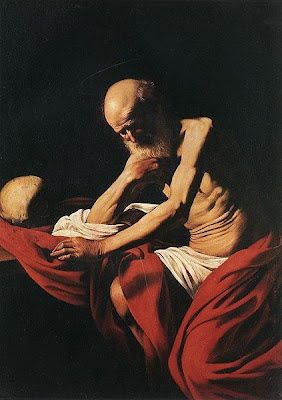I have been thinking of this all week and the Great Spencer has written it. And just in case you forgot the references, here are snippets on both:
Piss Christ is a 1987 photograph by the American artist and photographer Andres Serrano. It depicts a small plastic crucifix submerged in a glass of the artist's urine. The piece was a winner of the Southeastern Center for Contemporary Art's "Awards in the Visual Arts" competition,[1] which was sponsored in part by the National Endowment for the Arts, a United States Government agency that offers support and funding for artistic projects. A print of the photograph was damaged using a screwdriver or icepick on April 17, 2011 while on exhibit in Avignon, France. from Wiki
And the dung Mary, which I remember, wherein all those in favor of freedom of speech screamed bloody murder when the lawsuit was initiated. This bit is from Wiki as well, with no photos, please.....
The Holy Virgin Mary is a painting created by Chris Ofili in 1996. It was one of the works included in the Sensation exhibition in London, Berlin and New York in 1997–2000. The subject of the work, and its execution, caused considerable controversy in New York, with Rudolph Giuliani – then Mayor of New York City – describing Ofili's work as "sick".[1]
The potent mixture of the sacred (Virgin Mary) and the profane (excrement and pornography) became a cause of controversy when the Sensation exhibition moved to New York in 1999. The City of New York and Mayor Rudolph Giuliani brought a court case against the Brooklyn Museum, with Giuliani describing the exhibition of Ofili's work as "sick" and "disgusting". Giuliani attempted to withdraw the annual $7 million City Hall grant from the museum, and threatened it with eviction. The museum resisted Giuliani's demands, and its director, Arnold L. Lehman, filed a federal lawsuit against Giuliani for a breach of the First Amendment. The museum eventually won the court case.[3]On a yellow-orange background, the large painting (8 feet high by 6 feet wide) depicts a black woman wearing a blue robe, a traditional attribute of the Virgin Mary. The work employs mixed media, including oil paint, glitter, and polyester resin, and also elephant dung and collaged pornographic images. The central Black Madonna is surrounded by many collaged images that resemble butterflies at first sight, but on closer inspection are photographs of female genitalia; an ironic reference to the putti that appear in traditional religious art. A lump of dried, varnished elephant dung forms one bared breast, and the painting is displayed leaning against the gallery wall, supported by two other lumps of elephant dung, decorated with coloured pins: the pins on the left are arranged to spell out "Virgin" and the one on the right "Mary". Many other works by Ofili in this period – including No Woman No Cry – incorporate elephant dung, particularly as supports for the canvas, inspired by a period that Ofili spent in Zimbabwe.[2]
Giuliani was reported as claiming that Ofili had thrown elephant dung at a painting of the Virgin Mary: "The idea of having so-called works of art in which people are throwing elephant dung at a picture of the Virgin Mary is sick."[4] The press also reported that the painting was "smeared", "splattered" or "stained" with dung.[5][6] Ofili, raised as a Roman Catholic commented that "elephant dung in itself is quite a beautiful object."[7]
It is ok if nations blaspheme the Jesus Christ, Son of God, the Real God-Man, Second Person of the Blessed Trinity, Founder of the One, True, Holy, Apostolic and Catholic Church, but it is not OK to criticize a man-made religion created by a man (which is the teaching of the Catholic Churchon Islam).
Here is the article. The difference has to do with the fact that we do not kill people or burn down buildings when Christ is blasphemed.
The politics of terrorism seems to be working. Too bad. See my Men of the West series in the recent past.
Where are the bishops' statements on this? Here is Spencer on the New York Times.
When the target was Christianity, the Times said that artists had an obligation to "challenge the public." When the target is Islam, the Times starts talking about respecting religious faith. As Tim Blair notes, Islam has earned that "respect" at the point of a gun.
"Times Changes," by Tim Blair in the Telegraph, September 14 (thanks to Anne Crockett):
The New York Times editorial of October 2, 1999, defends the display of Andres Serrano’s Piss Christ and Chris Ofili’s The Holy Virgin Mary:
A museum is obliged to challenge the public as well as to placate it, or else the museum becomes a chamber of attractive ghosts, an institution completely disconnected from art in our time.The New York Times editorial of September 12, 2012, condemns the display of The Innocence of Muslims:Whoever made the film did true damage to the interests of the United States and its core principle of respecting all faiths.Whatever happened to “challenging the public”? Or is that obligation rendered non-obligatory when a certain public responds to challenges by killing people?







